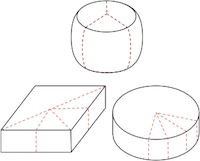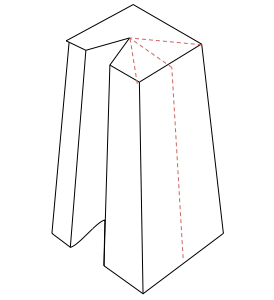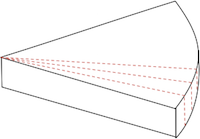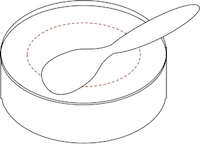Disclosure: This post contains affiliate links. If you use these links to buy something we may earn a commission. Thanks.
Have you ever bought cheese for an event later in the day and then suddenly thought, “My friends are going to judge me if I don’t cut this cheese the right way?” I do it ALL the time. Luckily, there are some easy rules to remember when you're about to slice that curd.
Probably one of the most basic of rules is that you want to make sure that everyone at your party will get an equal portion. That doesn't mean that you should get out a microscope and a laser beam to divide a quarter pound of gouda, so that 100 people can get an even share; but, rather, it means that pieces should be sliced evenly.
The second rule, which will break down into several subsequent diagrams is that you need to keep in mind the shape, texture and structural integrity of the cheese you're about to eat. Depending on the size and type of cheese, you will need to cut it a little differently.
Thirdly, if you are going to cut cheese, you will want to make sure you have a good knife. Most common knives that you will find in your house are serrated. The serrated edge of a knife will leave markings when you cut so, if you want to be taken seriously at your next party, go the extra step and invest in a good set of cheese knives.
Now, it’s important to distinguish that there are oftentimes actually two cuts; Many cheeses that are produced in large wheels, the first cut is when the wheel is divided into wedges for sale at a cheese shop or grocery store. The second cut would then be further subdividing the cheese into portions that you can serve. The first cut that I speak of above really falls on the shoulders of the cheesemonger; so, you shouldn't have to worry about that. Splitting hairs: For cheeses that are produced on smaller scale like camembert or logs of chevre, there is only one cut. Either way, below are rules for how to cut different types of cheeses, depending on their shape and texture:
Square and round cheeses
Small wheels that are either round or square shaped, like camembert, St. Andre, and robiola should be cut like a cake in even slices.

Pyramids
Considering pyramid cheeses like Valençay, Pouligny Saint-Pierre, and Fourme d’Ambert are essentially what we would consider square cheeses, it may not warrant another section, but in a similar fashion you cut evenly sized wedges as if you were cutting a round cake.

Semi-firm to hard wedges
Hard cheeses like aged gouda, cheddar and comté are sliced across the wedge horizontally. The end piece, the one that includes the rind is cut crosswise to make two evenly portioned pieces.

Soft wedges
Soft-ripened cheeses like camembert and brie have gooey curd goodness on the inside so you don't have too many options for cutting them.

Logs
Blue cheeses
Cheeses with veins of mold like gorgonzola, roquefort and stilton are cut in half lengthwise and then cut radiating outward to evenly spaced points along the thick edge of the wedge.

Box cheeses
For cheeses that come in boxes like epoisses, or St. Marcellin, you cut a circle in the top and remove that piece. You scoop out and eat the cheese as if it were a bowl.

